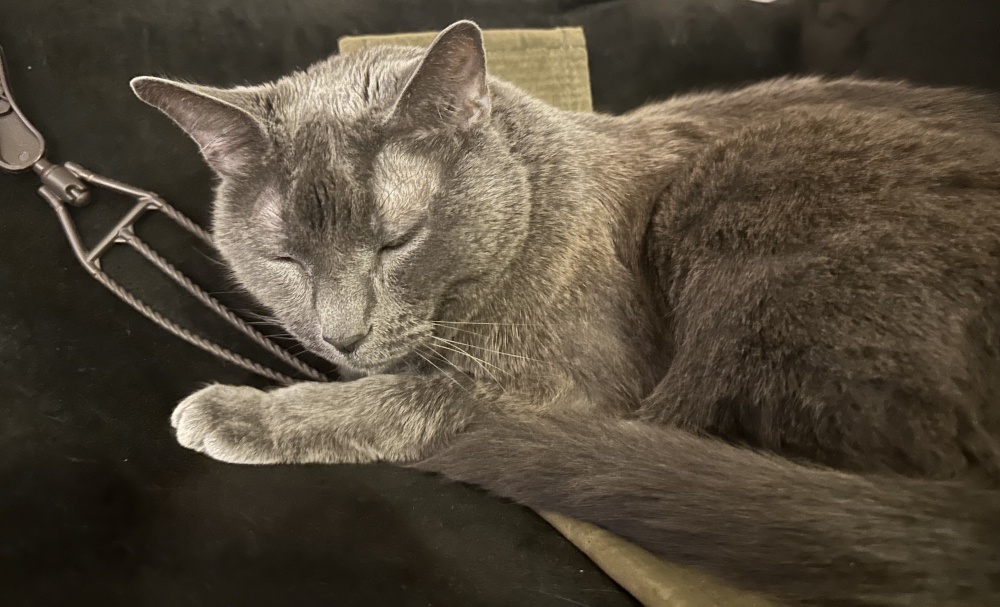The four felines in my household would gladly accept second helpings at mealtime, but I do my best to ignore their begging eyes and sweet mews. Twice a day, I use measuring spoons and scoops to dole out their kibble and canned food. Twice a year, my felines are weighed at my veterinarian’s clinic during their wellness exams. The scales at the vet clinic serve to validate that measuring my cats’ meals has kept them all at healthy weights.
“It is important for people to get into the habit of measuring their cats’ food at mealtime to prevent excess body weight, which shortens both the health span and life span,” says board-certified veterinary nutritionist Dr. Sean Delaney, founder of Balance IT, a pet nutritional website run by veterinary nutritionists.
Kelly Kanaras, communications director at the Pet Food Institute (PFI) agrees, adding, “There is a myriad of health issues associated with cats being overweight, including diabetes, heart disease and joint issues.”
Count those calories
In general, indoor cats should eat 25 to 30 calories per pound of weight. So, for a 10-pound adult, that would calculate to 250 to 300 calories. Keep in mind that the recommended serving amounts on commercial cat foods serve only as guidelines. In addition, age, breed and other factors play roles in determining a cat’s best meal portion size.
“The calorie needs for every cat will be different based on their age, whether they are neutered and their activity level,” says Carolyn Orr, PhD, an animal scientist at PFI, which is headquartered in Washington, D.C. “The caloric requirement decreases with age and reduced activity. A 10-pound kitten would need over 500 calories while a normal, neutered adult cat of the same weight would need 260 calories.”
A calorie is scientifically called a kilocalorie or kcal. A calorie is a unit of energy in a serving of food. If you want to dive deeper, a calorie is defined as the amount of heat needed to raise the temperature of a kilogram of water by 1 degree Celsius. Clear as mud, right?
Measure food
Fortunately, you have easy options to precisely measure kibble, canned food or homemade diets. There are calorie-counting calculators on websites and apps you can download to assist you in tallying your cat’s daily calorie consumption. There are even handheld digital pet food scales.
You can also control your cat’s daily food consumption by using an automatic cat feeder.
To help you hone your proper portioning skills, Dr. Delaney recommends the calorie calculator for cats, a weight management tool from the Pet Nutrition Alliance, designed to help the veterinary health team make nutritional assessments and recommendations to help their patients maintain or achieve a healthy weight.
“You can use this calculator to get an initial recommendation,” he says. “Adjustments to the amount fed based on an individual cat’s body condition every two to four weeks is then typically recommend to maintain an ideal body condition,” he adds.
You can also reach for a digital scale in your kitchen.
“A digital scale is the easiest way to measure food because different foods have different densities, so measuring by volume can be inaccurate,” Kelly says. “All cat foods have labels that display the amount of calories in a serving.”
Keep kitty active
Veterinarians also encourage us to pair up exercise with portion control to keep our cats fit.
Skip the food bowl on occasion and put a meal inside a pet food puzzle or sprinkle the meal on a snuffle mat to encourage your cat to sniff out, bringing out his inner hunter.
Alice Moon-Fanelli, PhD, a certified applied animal behaviorist in Connecticut, says you can reduce stress by doing your best to serve meals the same times each day.
“My cats, Matteo and Zanetta, are quick learners,” she says. “They have never received free-feed kibble. They seem to have accepted the concept of mealtimes.”



